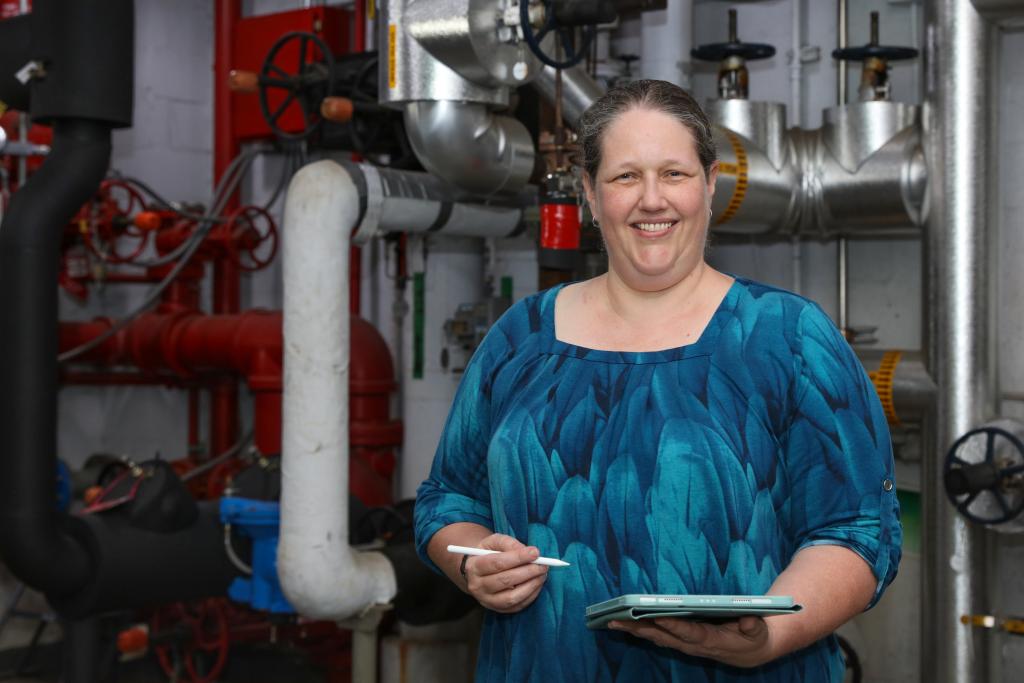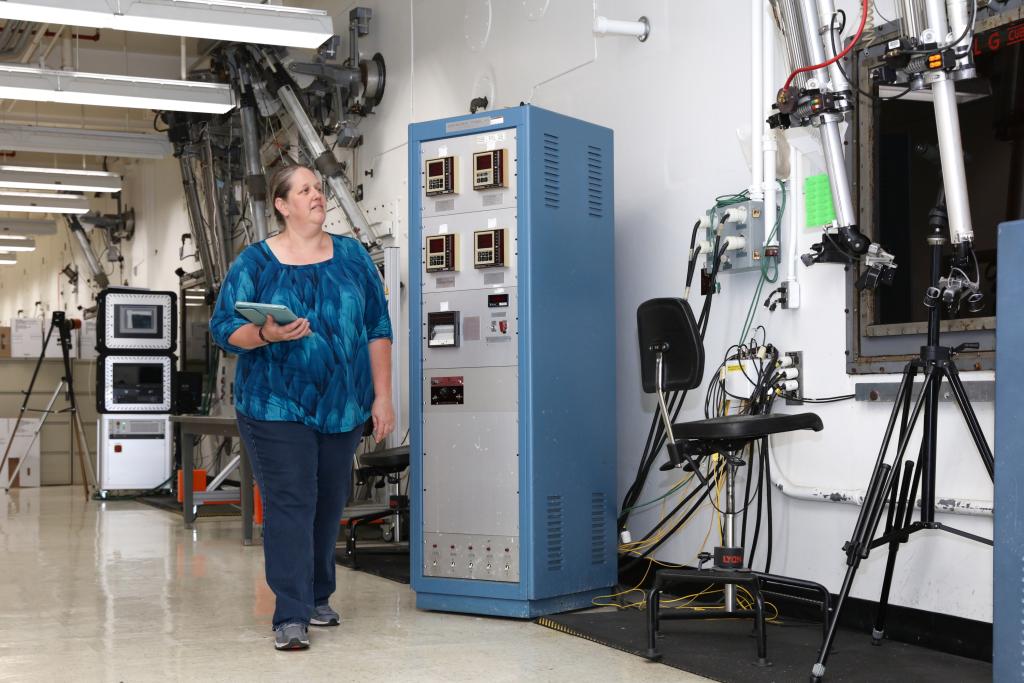
When you walk into a building on the Oak Ridge National Laboratory campus, do you think about its stability? Do you consider whether the walls can withstand a tornado? An earthquake?
ORNL is home to many buildings that were constructed during the early 1940s, as part of the Manhattan Project. Some people may take for granted that, despite their age, the buildings will allow for performing critical missions safely.
Sara Martinez makes sure that, even in the event of natural disasters, ORNL's aging structures will still provide a safe work environment.
As a structural engineer in the Design Engineering group supporting the Nonreactor Nuclear Facilities division of ORNL's Isotope Science and Engineering Directorate, or ISED, Martinez focuses on design and safety of ISED structures. She loves applying her skills to provide support, she said, so employees can do their jobs in a safe facility.
Martinez uses her expertise to analyze and problem-solve structural issues, providing solutions to engineering problems. Through inspections, walkthroughs and evaluations, she ensures buildings are protected from adverse conditions.
Martinez's childhood provided an early blueprint for an engineering career. In her small town, Martinez watched her father, who learned construction skills working with her uncle's company, build on his farm. Tagging along, she was introduced early to the world of concrete.
Martinez's father set expectations high for her math grades; two of his three degrees were in math. Her math skills helped place her in a gifted program at school, leading to other opportunities. Career aptitude tests while she was in high school steered her toward engineering. Her college education at Tennessee Technological University provided her with the skills that led to her later becoming a licensed engineer.
It was a good choice, she said.
"I love being an engineer and designing," Martinez said.

Martinez began her engineering career with Pro2Serve, using her skills to design and analyze welds, anchorage and retaining walls. Working for Pro2Serve, a subcontractor for UT-Battelle, gave Martinez the opportunity to complete design and renovation projects for ORNL, Los Alamos National Lab and National Nuclear Security Administration sites across the Department of Energy complex.
Her transition to a job at ORNL − supporting ORNL's five nonreactor nuclear facilities mitigating the adverse effects of natural phenomena − was easier because of her previous exposure to ORNL culture during her time on campus with Pro2Serve.
Her job as a structural engineer is difficult but fulfilling. Martinez describes her mission as "extending the life of our buildings while protecting the lives working within them."
"Codes have strengthened requirements for natural phenomena, and nuclear facilities are special because they need higher strength for the material their buildings contain," Martinez said.
This commitment to compliance is clear through her contributions to the ventilation upgrade project at the Radiochemical Engineering and Development Center, or REDC, labs and hot cell support areas. The upgrade will minimize outage shutdowns of the facility, which safely processes and stores large quantities of radioactive isotopes.
In addition, part of Martinez's job is to address potential hazards. Recently, she worked to repair a broken trailer frame for the Q-ball trailer at the REDC used to transport curium targets to the High Flux Isotope Reactor for irradiation. She gets satisfaction from knowing her work is essential for continuous production and processing.
To facilitate her work, Martinez works extensively with employees at the shop to make her designs, which are then installed by specialized craft employees.
"When I send something to fabrication and then craft installs it and it fits and works, I get to see what I designed built and used," Martinez said.
When she's not working, Martinez uses her creativity for other pursuits: needleworking, gardening and painting, as well as an occasional project with her husband and son, who both are carpenters. She enjoys spending time with her four children and six grandchildren. She likes live music and frequently travels to hear it at area venues.
Both her work at the lab and East Tennessee life are good fits for Martinez.
"I am lucky to be able to live a somewhat rural life and still be able to work at ORNL doing a job that I love," she said.
UT-Battelle manages ORNL for DOE's Office of Science, the single largest supporter of basic research in the physical sciences in the United States. The Office of Science is working to address some of the most pressing challenges of our time. For more information, please visit energy.gov/science. - Erica Cole






